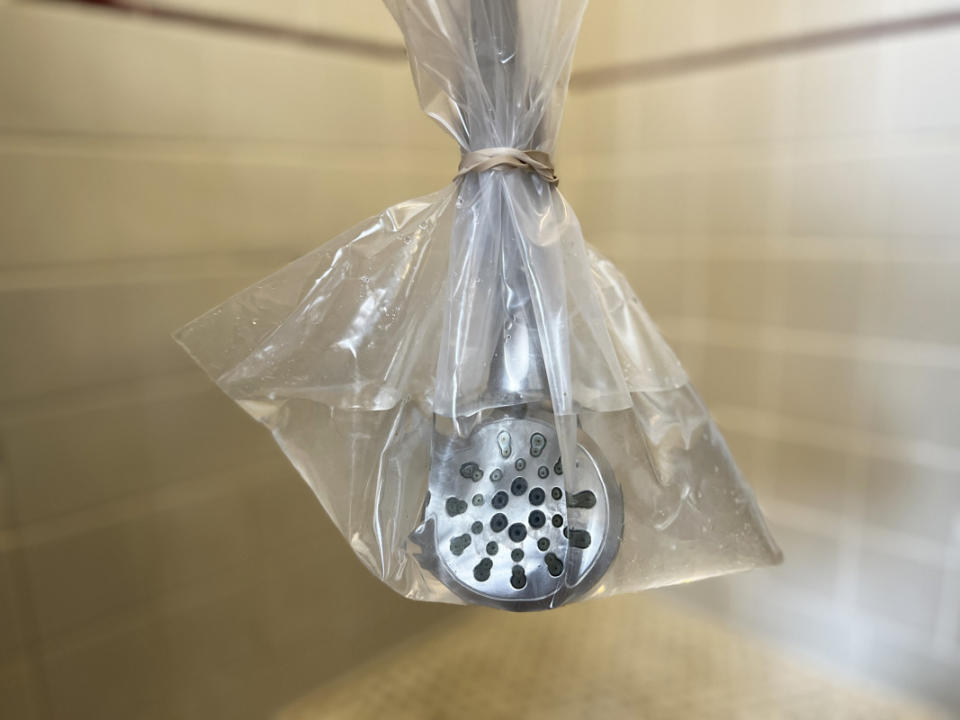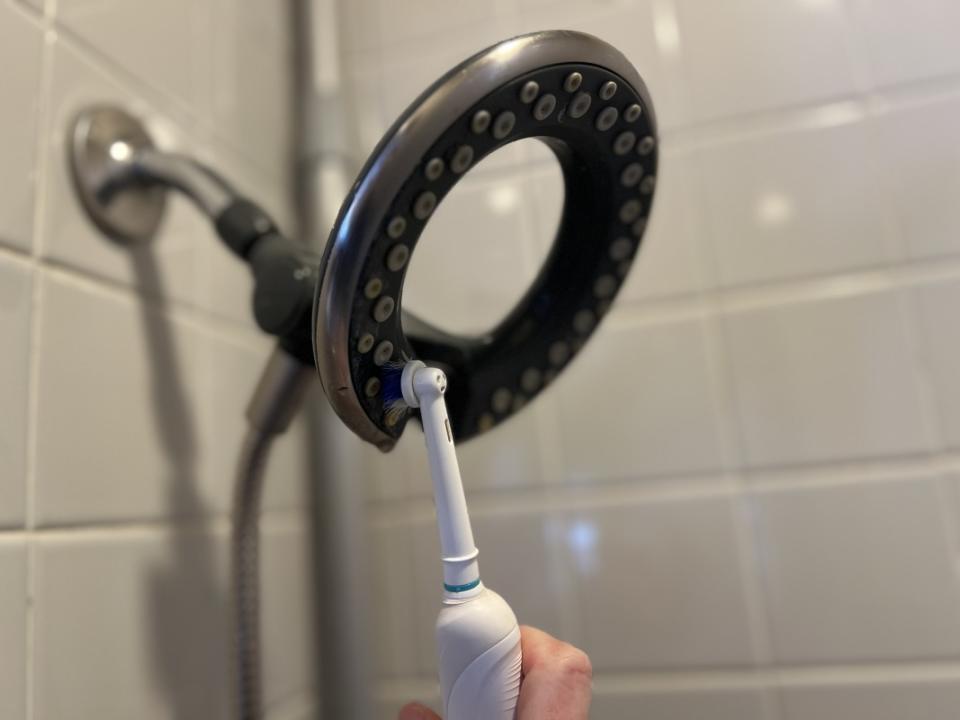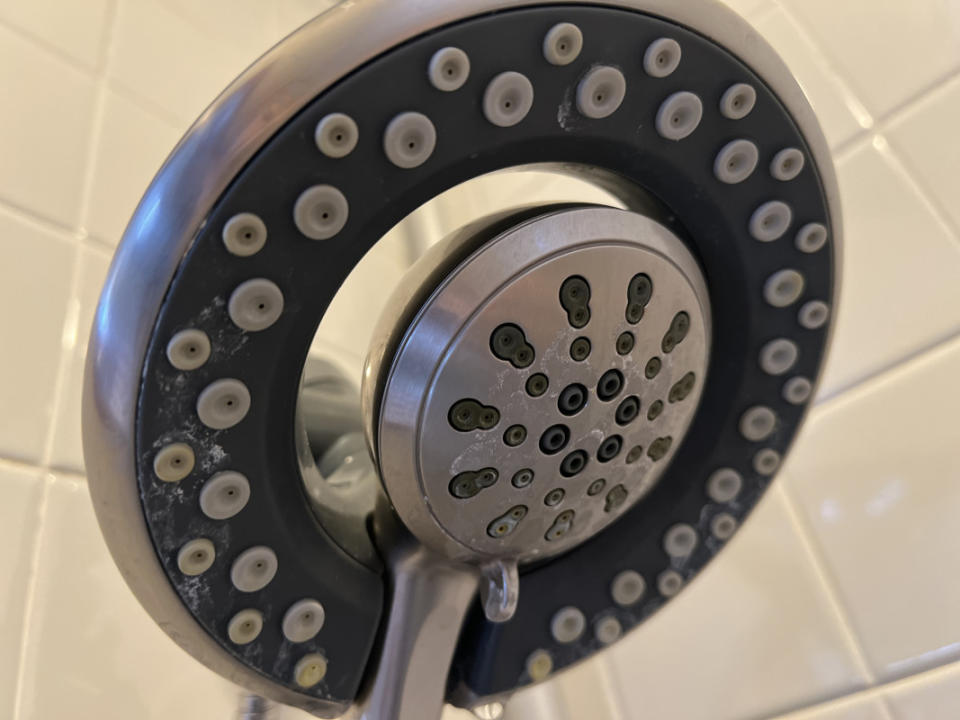How to Clean a Showerhead
Your showerhead needs regular cleaning to maintain a strong flow and prevent mineral buildup, especially in areas with hard water. This task is straightforward and since it doesn't use commercial cleaners, you probably have all of the materials on hand. Set aside just a few minutes and get this cleaning project out of the way.
Materials
White vinegar or apple cider vinegar
Plastic bag
Rubber band or twist ties
An old toothbrush or soft brush
1. Remove the Shower Head
Unscrew the shower head from the shower pipe. If it's stuck, you may need a wrench to loosen the fixture.
If you have a non-detachable model, or if it's simply stuck, prepare to wrap a plastic bag around the entire showerhead.
2. Soak in Vinegar
Fill a plastic bag with white vinegar or use a clean cloth soaked in vinegar.
Place the bag or cloth over the showerhead, so that the nozzles are submerged in the vinegar.
Secure it with a rubber band.

Emily Fazio
3. Let it Soak
Allow the entire shower head to soak in the vinegar for 15-20 minutes. This helps dissolve mineral deposits and hard water stains.
Don't soak the head in vinegar for longer than recommended because prolonged acid exposure can dull some finishes.
4. Scrub Nozzles
If there are stubborn deposits, use an old toothbrush to scrub the nozzles gently to remove loose debris. This is one of the many reasons I save an old Oral-B toothbrush head; it's powerful for plaque and stains, and also powerful for bathroom grime.
Ensure that you clean each nozzle thoroughly to remove any buildup.

Emily Fazio
5. Rinse and Reattach
If detached, remove the bag or cloth and hold the showerhead under the bathtub or sink spout. Run hot water through the showerhead to rinse away the vinegar and loosened deposits.
If attached, remove the bag or cloth and turn on the water to flush the showerhead.
Dry the clean shower head with a soft cloth to remove soap scum and prevent water spots and keep the finish sparkling.
Reattach the head to the shower arm, if still detached.
Cleaning Tips
If your showerhead has a filter, check the manufacturer's instructions for cleaning or replacing it.
If any of the nozzles are still clogged, try again to gently rub the blocked spot with a brush before resorting to another vinegar soak. You can also try to gently insert a small tool like a toothpick or a pin to clear a particularly stubborn block.
If cleaning doesn't improve the flow rate, check for water pressure issues in your plumbing system. If multiple faucets in your home seem slow, consult a plumber to address underlying plumbing issues.

Emily Fazio
Why do shower heads get clogged?
Showerheads can become clogged from an accumulation of mineral deposits and other impurities in the water. The primary factors contributing to showerhead clogs include:
Hard Water: Water with a high mineral content, commonly referred to as hard water, is a common culprit. Minerals can accumulate over time, forming calcium deposits that restrict flow.
Sediment and Debris: Sediment and debris in the water supply can build up in the shower arm and head, causing clogs. This debris may include particles like sand, rust, or dirt. Rinse well after cleaning.
Bacteria and Mold: In the bathroom's humid environment, bacterial growth and mold can thrive. These microorganisms can lead to clogs.
Corrosion: Over time, metal components in a bathroom can corrode due to exposure to water and air. Corrosion causes rust and decreases water pressure.
How to Prevent Mineral Build-Up
Install a water softener to reduce mineral deposits.
Use a model with rubber nozzle holes that are less prone to mineral buildup.
Check the fixture as part of your weekly cleaning to prevent a clogged showerhead.
Consider using a showerhead filter to reduce impurities.

